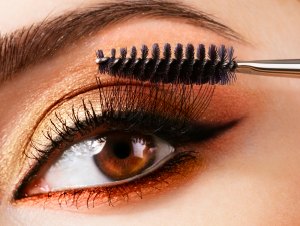 What’s in your cosmetics? Historically, women suffered for beauty with makeup additives
like lead, arsenic, belladonna, antimony and more. But all that is a
thing of the past, right? Cosmetics are tested for safety and consumers
can apply them without needing to be worried about their health.
What’s in your cosmetics? Historically, women suffered for beauty with makeup additives
like lead, arsenic, belladonna, antimony and more. But all that is a
thing of the past, right? Cosmetics are tested for safety and consumers
can apply them without needing to be worried about their health.
Mercury
is a known neurotoxin with potentially serious effects including the
development of severe cognitive disabilities like poor coordination,
memory loss and difficulty learning and retaining information.
Especially in children and developing teens, it can hamper development
and cause life-long health problems. And the eye, with its fragile mucus membrane,
is one of the worst places to apply a product that contains mercury,
because the delicate tissues of the eye can rapidly absorb it and feed
it directly into the bloodstream.
Mercury
makes up less than 1% of the total product, companies are not required
to label it on their cosmetics, which means consumers have no way of
knowing if a mascara contains mercury or not. This is bad news for
consumers worried about the health risk and those trying to limit their
exposure to mercury and other toxic compounds, as they have to rely on
companies to disclose information about cosmetics ingredients, and few
companies will voluntarily discuss toxins in their cosmetics if they can
possibly avoid it.
Wearing
mascara shouldn’t have to be deadly, and while we’re excited about the
Minamata Convention and the overall reduction of mercury in the
environment that will result, we’d love to see makeup included too!
To read more visit : http://www.care2.com/causes/do-you-put-mercury-in-your-eyes.html#ixzz2xt40k71P
Wearing
eye make up to look beautyfull is always admire my woman all over the
world but always be carefull which type of cosmetics you use.
20/20 Eyeglass Superstore® keeps you updated on various eye diseases ,eye conditions and eye problem that can cause you harm and shares various tips about eye care with you.Drop in at any convenient location at Orlando, Melbourne or Orange City for an eye exam by an Independent Doctor of Optometry.
No comments:
Post a Comment